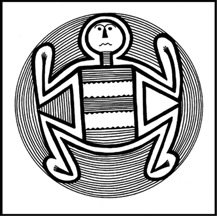Stephen H. Lekson – “Mimbres: Its Causes and Consequences”
THIS LECTURE WILL BE HELD 6:30 pm in the Chavez Building Room 110 in conjunction with the Holiday Party and Auction to support AAHS Scholarship and Research Grants. The Chavez Building is a short walk from ASM and we will have people to direct you to the Building from ASM

Mimbres is often treated as some sort of backwoods idiot savant: an isolated society with regrettable architecture and astonishing artists. Mimbres was more than that. To begin with, Mimbres was anything but isolated, deeply engaged first with Hohokam, then with Chaco, and finally with Casas Grandes. Mimbres was roughly equidistant from the respective heartlands of those three ancient societies. Mimbres, Hohokam and Chaco were contemporary; Casas came later. Up to 900 CE, there are many more Hohokam “things” in Mimbres (palettes, cremations, cut shell, red-on-brown/buff figurative pottery, etc) than there were Hohokam things at Chaco. Subsequently (and conversely), when Hohokam waned and Chaco waxed, around 1000 CE Mimbres shed its Hohokam interests and took on a Chacoan cast: indented corrugated jars, black on white pottery, stone masonry pueblos with “kivas.” And ultimately, after 1150 CE when Mimbres qua Mimbres ended, its history continued in developments culminating in Casas Grandes. Mimbres was a player. Mimbres “art,” however, was in a sense isolated – as much as we admire it today: very little Classic Mimbres pottery (and particularly the ideologically charged figurative pottery) went beyond Mimbres territory. Other ancient societies did not covet Mimbres bowls — which tells us something about Mimbres art! These points are illustrated by the University of Colorado’s recent research in the Mimbres area.
Further reading: “Mimbres Lives and Landscapes” ed. Margaret Nelson and Michelle Hegmon (SAR Press 2010); “A History of the Ancient Southwest” by Stephen Lekson, chapters 4-6 (SAR Press 2009); Chaco, Hohokam, and Mimbres: The 11th and 12th Centuries in the American Southwest, by Stephen Lekson,Expedition 35 (1) (1993); Woodrow Ruin, by Jakob Sedig. El Palacio 118 (3): 49-55 (2013).
 All Posts
All Posts